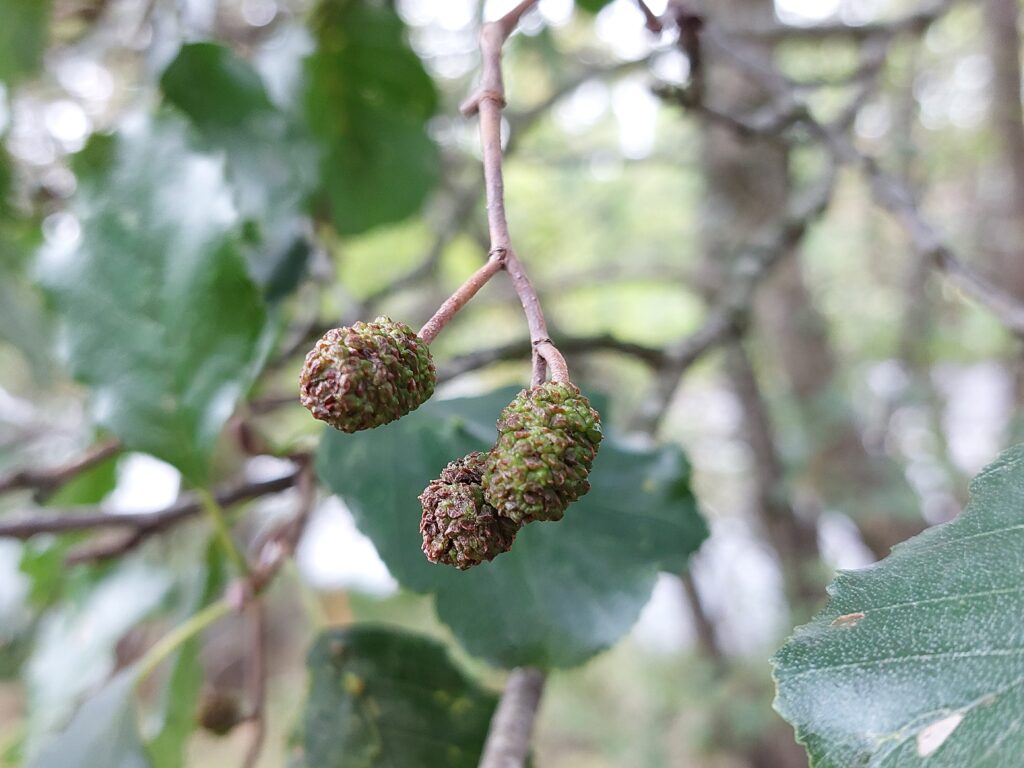News
Nature notes: alder
29 December 2024
Nature notes: alder
30 December 2024
Identifying trees in winter can be tricky when obvious distinctive features like leaves, flowers and fruits are absent. One to look out for is alder, Alnus glutinosa.
It can be quite easily identified as it is the only deciduous tree in the UK that has cones. These are the female catkins that stay on the tree during winter and turn brown. They are small and oval-shaped, grouped in numbers of three to eight on each stalk. You might also see male catkins too as they grow on the same tree, these are longer in shape, between 2-6cm.
Alder is a hardy tree, well-adapted to wet conditions. In fact, its roots never rot if waterlogged, instead they get stronger. For this reason, historically, alder has been used to make boats, sluice gates, and water pipes. In past times, alder was the preferred wood in clog making, and it was said that placing a few alder leaves in the shoe before a long journey would keep the feet cool.
Because of the ability of alder to thrive in wet conditions, look out for it along riverbanks, lakes, marshes, and wet woodland. Its roots help to stop soil erosion, fix nitrogen and, where exposed along rivers and streams, provide shelter for fish and even otters, who use them for nest (holt) sites.








